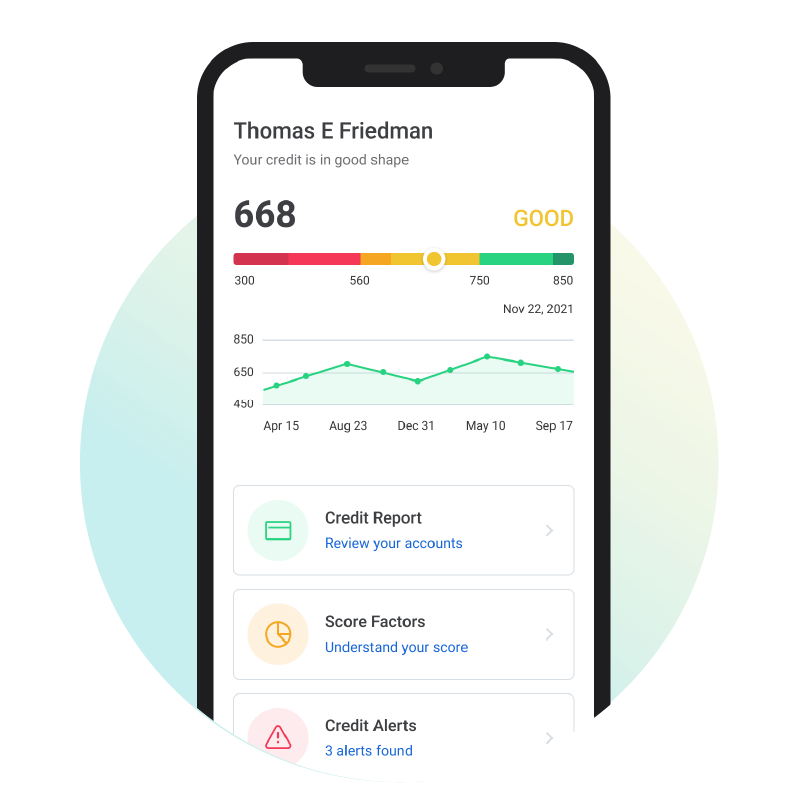Fintechs and financial institutions are faced with a crowded market of consumer facing fintech solutions. Couple a competitive market with the ever-evolving demands of tech-savvy users armed with high expectations and it becomes incredibly clear that fintechs and financial institutions need to select the right vendors to effectively meet their customers’ needs.
Why is picking the right solutions provider important?
If we think about our primary financial institution as an example, the solution set offered to us as end consumers - is typically stitched together by a number of different vendor products. For example - knowledge based authentication, multi factor authentication, purchase protection on your credit card, concierge services, etc. are likely managed by a separate vendor. And that makes sense - more often than not, it’s typically better to partner with a vendor who has deep experience in the thing that we need vs. building it ourselves when we have limited experience in building the thing we need (and likely burning up resources and driving up development costs and tech debt along the way).
But in a sea of seemingly endless solution providers, what’s the deciding factor for choosing the right vendor? Hint: it’s not price. Yes, price is important. It’s a given that the price you’re paying has to align with your budget. But is price the only factor? Absolutely not.
The impact on our customer is the ultimate factor.
As with anything we do and all the decisions we make as corporate stewards, we’re guided by our company goals. And every decision we make should ultimately ladder up to whatever goal or OKR we’re driving towards.
For consumer facing companies, everything boils down to one thing—our customer—including how we select our vendor and solution partners.
Yet it’s not a primary factor in most content out there around vendor selection. A quick Google search turns up a few helpful articles on how to decide but most of them revolve around price, capability, quality and the character of the vendor.
Perhaps it’s implied that addressing the customer’s current and future needs are imbued in each factor or in each step of the process. However, creating a dedicated step that prioritizes answering the question of “well, what does our customer really want?” is a forcing function to help us focus on what’s most important.
Putting the customer at the center of everything we do.
The customer is inherently at the center of (probably) every company OKR. For example, let’s say our objective is to grow our customer base. To grow our customer base, we need to offer a superior digital experience to our audience - enticing more users to join our platform.
Or, let’s assume our objective is to increase the delivery speed of new features. Why is that important? So we can get new features faster out to our customers who are desperately asking for them. And if our objective is to drive revenue, then that means we need to deliver the products and features that our customers want and are willing to pay for.
So if our decisions are made by what will serve the customer best, shouldn’t our solutions provider selection process be the same?
We all know that being authentically customer centric is crucial to the success of our respective businesses. We know to understand the customer’s needs inside and out. Addressing their problems drives the elements of our product roadmap. And all of our external facing messaging should be in their vernacular.
Let’s bake our customer centric philosophy into how we select our vendors as well. Here’s a proposed revision of how we infuse our customers’ needs and wants into our vendor selection process and why it’s important.
Step 1: Know your users
Before embarking on the journey of selecting fintech and fintech platform vendors, it’s essential to gain a comprehensive understanding of your users. Analyze their behaviors, preferences, and pain points and leverage those insights to identify the specific needs and expectations that your solutions need to address. Conduct user research, engage in conversations, and gather feedback to develop a holistic view of your target audience. Marry them with industry trends to come up with a vision of what the customer needs today (and will want in the future).
Step 2: Define your overall vision for the customer
Once you have a clear understanding of your users and the experience you’d like to deliver to them based on market trends and their needs, evaluate how these new products or features align to the goals of your organization. Goals that include customer acquisition, retention, revenue growth, operational efficiency are likely what your organization is marching towards and are all typically achieved by delivering an excellent customer experience. If the vision you’ve mapped together doesn’t align with any company goals, it might be a good opportunity to reassess whether or not this vision is right for your company and your customer.
Once you have strategic alignment between your company goals and your vision for what you’d like a vendor to deliver for your customers, it’s time to evaluate fintech and platform vendors based on their ability to contribute to your organization objectives.

Customer-first products start with the right partners.
Step 3: Assess provider capabilities—will they deliver what the customer needs?
Evaluate provider expertise: In a crowded market, not all fintech and fintech platform providers are created equal. Look for vendors that specialize in your specific domain and possess a deep understanding of the challenges faced by your industry. Evaluate their expertise, track record, and reputation to ensure they can deliver solutions that align with your strategic goals. Assess their financial stability, scalability, and the compatibility of their technology stack with your existing systems.
Analyze provider offerings: When selecting fintech and platform providers, it is crucial to examine the comprehensiveness and relevance of their offerings. Identify the specific pain points and user needs that your organization aims to address and seek providers that offer comprehensive solutions for those areas. Consider the user experience, functionality, security, scalability, and regulatory compliance of their offerings. Conduct thorough due diligence, including requesting demos, checking references, and reviewing case studies to assess their capabilities. See if their UX/UI reflect best practices and put yourself in the user’s shoes when you do a test drive.
Determine if the estimated ROI is worth the price: How much of an impact will this ideal user experience have on our margins and our OKRs and how much are we willing to pay for that? Sometimes we fall into the trap of letting the tail wag the dog - in other words, we have a budget we’ve given and we’re told to operate within that budget. But, what happens if the perfect solution we’ve found exceeds our budget? It’s worth a discussion with management if we believe that we’ll get a multiple on our investment. Make the business case and push it forward.
Assess integration capabilities: To execute your vision effectively, seamless integration between your existing infrastructure and the provider's solutions is vital. Do they offer flexible implementation options that work with your existing ecosystem and will implementation be relatively quick and easy? Do they offer embedded web components? What’s interesting is that the collective need in making implementation faster and more efficient has given rise to embedded fintech platforms which are increasing in popularity for a few reasons:
-
Embedded products and features make for a more seamless customer experience thereby increasing engagement and customer stickiness
-
They speed up product launches since the UI/UX is already built
-
They have the potential to drive towards lower acquisition costs
Read more from GGV on Why Embedded Fintech is a Bright Spot in Today’s Market and check out our white paper on the differences between embedded components and APIs.
If embedded web components aren’t an option and integration via APIs might take a little bit longer, that’s okay - just determine if they can provide ongoing support during implementation with good responsiveness. Strong integration capabilities and solid support minimize disruption and enable a consistent user experience across your ecosystem.
Ensure security is a priority: Is security a priority for them so that you can focus on your business? What protocols do they have in place in the event of a data breach? Are they SOC 2 certified? How robust is their compliance program? All of these questions are necessary to help reassure your stakeholders and customers that their data will be handled with care.
Step 4: Capabilities aside, will this be a good match?
This one’s arguably one of the more important questions. Reflect on all of the interactions you’ve had with your candidate providers and ask yourself these questions: Did I enjoy spending time with them? How did I feel after speaking with them? Would I be excited at the idea of spending 1 hour each week with them for the next 6-12 months or does it make me feel dread?
Simply put, if you haven’t been enjoying your interactions with them, then it’s just human nature to recoil from wanting to spend additional time. And the less time we spend with our vendors and solutions providers, the less we’re getting out of these relationships which ultimately impacts our customers’ experiences. If we’re not excited about this relationship, then we’re not motivated to think about all the different ways we can work together to deliver the best customer experience that we can together. On the opposite end of the spectrum, if we're in a relationship that doesn't thrill us, we tend to spend the least amount of time possible thinking about it.
You might also be thinking that the person you’ve been interacting with is just one person out of the entire company - and perhaps, the account management team will have entirely different personalities. That’s entirely fair. So, it would be prudent to ask to meet with them before signing anything to ensure there’s a personality match there and that the negative interactions you’ve been having isn’t a signal of a larger cultural problem at the company.
Step 5: Do you believe in their vision?
When you invest in a solutions provider, you’re investing in them, their team, their product and their vision. How are they thinking about the future? What does their future roadmap look like and how innovative do we believe they are?
Selecting a fintech or platform provider is not a short-term decision; it should support your long-term growth plans and your belief on what the future will hold for you and your customer. Assess the scalability and flexibility of the vendor's solutions to accommodate your future needs and expansion plans. Consider the potential for customization, upgradability, and the vendor's roadmap to ensure their offerings can evolve alongside your organization.
Another question we find to be pertinent is—will partnering with this provider allow me to consolidate vendors?
We’re seeing clients moving away from point solutions to platform solutions to help consolidate their vendor ecosystem, reduce costs and of course—do more with less. Consolidating vendors means spending less time managing each individual relationship while likely also leading to less frustration and lost time dealing with systems that don’t work cohesively together. When a good subset of your technology or offerings come from one vendor, there’s reduced risk of incompatibility between products - which, ultimately leads to a better customer experience.
Everything boils down to the customer.
All of the aforementioned elements are all questions to answer the ultimate question - will selecting this vendor be the right choice for my customer?
In the rapidly evolving fintech landscape, choosing the right vendors is critical for organizations seeking to enhance their digital offerings and meet the evolving needs of their users. By truly understanding your users and aligning vendor choices with your overall strategy, you can execute a vision that resonates with your target audience. Conducting thorough evaluations, considering integration capabilities, and planning for future growth will empower you to make informed decisions and build fruitful partnerships with fintech vendors.
Remember, the success of your initiatives hinges on your ability to combine user-centricity with strategic alignment at every step of the selection process.
Launch embeddable tools your customers actually want.
Book a 15-min call.
Disclaimer: Array takes pride in ensuring the information we share is accurate and up-to-date; however, we understand that the information you read may differ from the product(s) and/or service(s) mentioned. We present the product(s) and/or service(s) you read about without warranty. We recommend you review the product and/or services’ terms and conditions before you make a decision. If you encounter inaccurate or outdated information, let us know by writing to: info@array.com.
Editorial Note: This content is the author’s opinion, expression, and/or recommendation(s).
Tags:
Thought Leadership
Post by Amelia Chen
Amelia Chen is the Head of Marketing at Array, a leading embeddable fintech products platform company where she leads all of marketing. Prior to Array, she led product marketing for the corporate segment at Relativity, a legal tech and compliance software company. With a background in finance, sales, strategic partnerships and marketing, Amelia is passionate about understanding the market and finding the most effective and resonant ways to communicate with customers. Always seeking to learn more, Amelia holds an MBA from the Kellogg School of Management and earned her Bachelor's Degree from Northwestern University.


